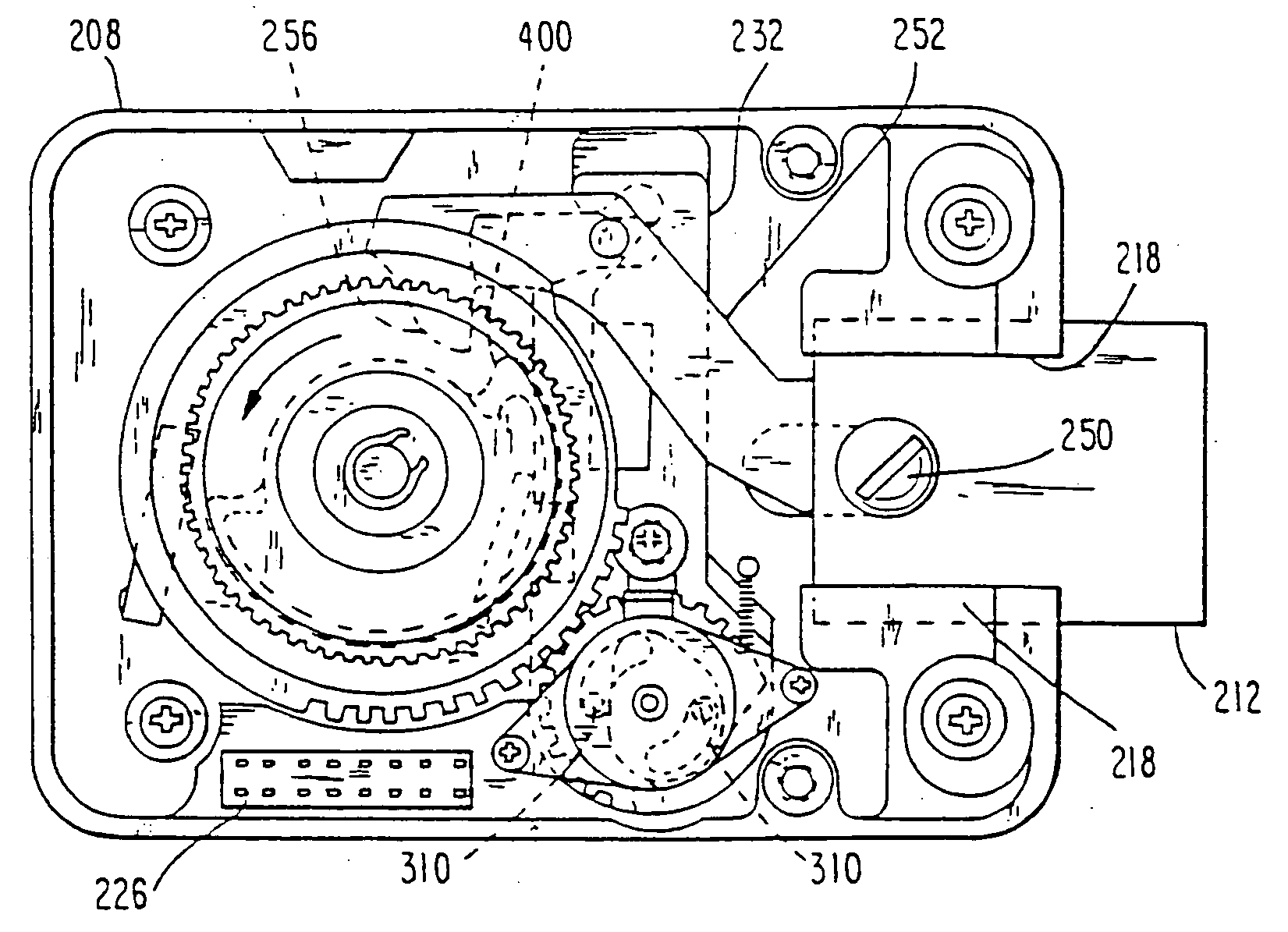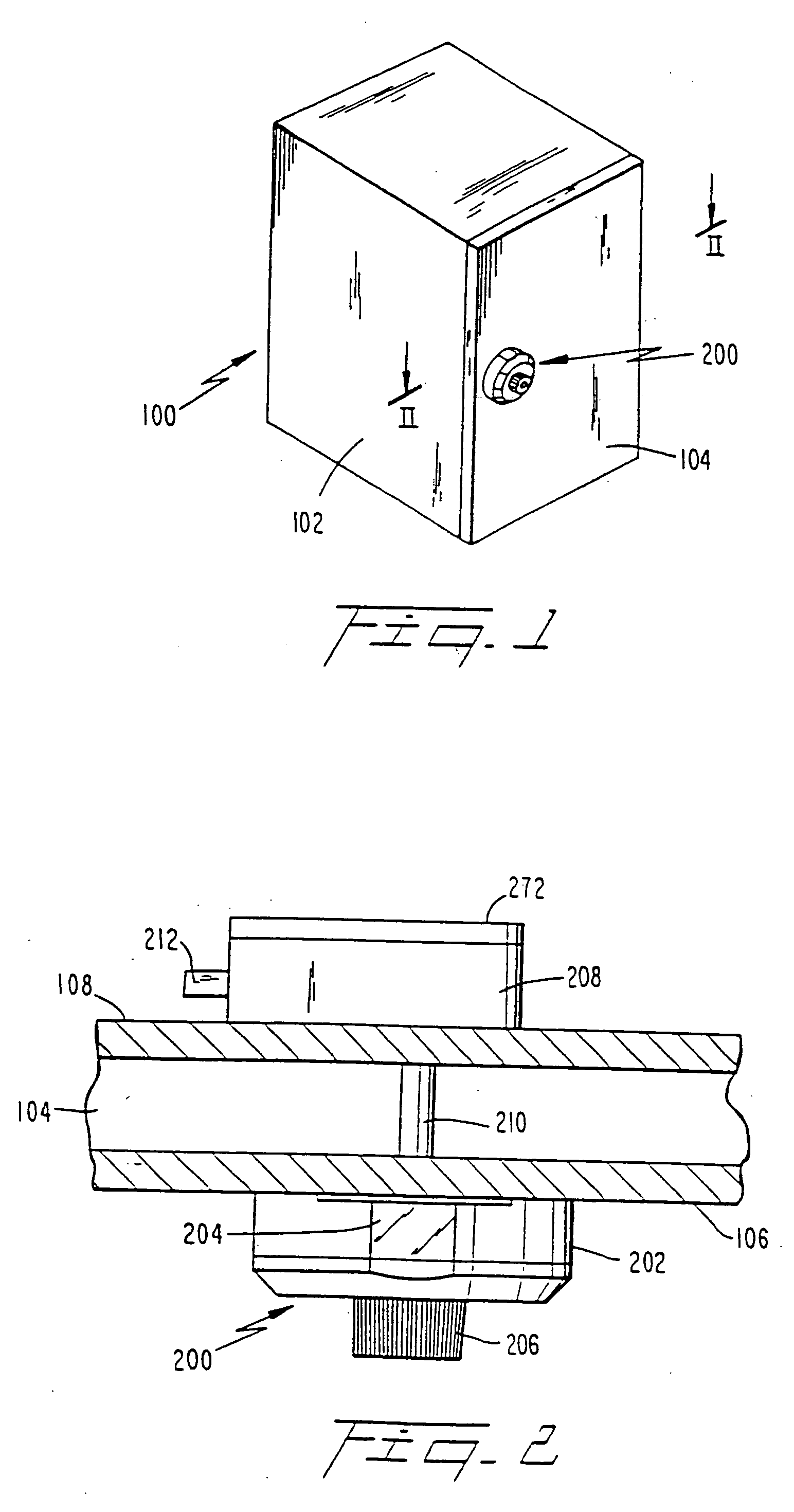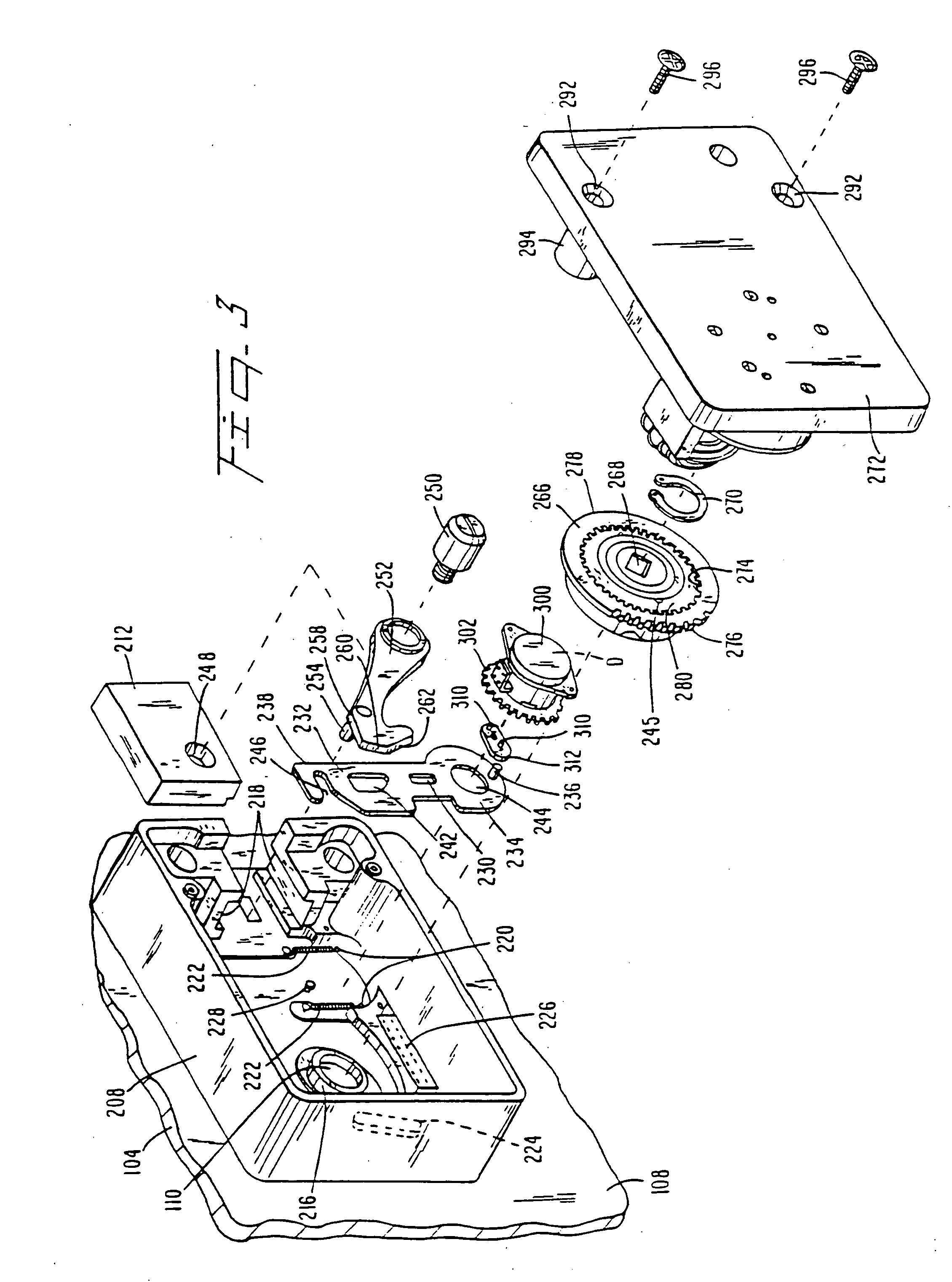High security lock mechanism
a high-security, lock mechanism technology, applied in the field of high-security lock mechanism, can solve the problems of inability to use long-life batteries, require substantial amounts of electric power, and even to power a small microprocessor, and achieve the effect of restoring security
- Summary
- Abstract
- Description
- Claims
- Application Information
AI Technical Summary
Benefits of technology
Problems solved by technology
Method used
Image
Examples
first embodiment
[0059] Referring to FIGS. 7A-7C, a view intended to be generally comparable to the view of the first embodiment, per FIG. 6A, a lock-bolt 212 is slidably guided within guides 218, 218 and a pivot 250 pivotably connects lock-bolt 212 to a lever arm 702 which has a hook 704 at a distal end thereof. The extreme distal end of lever arm 702 ends in a frontal surface 706, the shape of hook 704 being defined by an elongate curved surface 708 which meets a rear hook surface 710 at a point 712 of the hook. These surfaces are polished smooth. Lever arm 702, at a point intermediate its ends, is provided with a spring connection pin 714. A first spring 716, of selected length and stiffness, is hooked at one end to spring connection pin 714 and at another end to a first spring attachment point 718 at an upper portion of lock casing 208. Absent the application of an externally applied force, first spring 716 provides a sufficient biasing force to hold lever arm 702 with its smooth front surface 7...
third embodiment
[0075] Note that, as with the two previously described embodiments, in this third embodiment the basic principle utilized is to employ a very small electrical power pulse to cause a light-weight, low-friction electric motor to cause a small rotatable element to rotate to initiate an engagement between a lever arm and a manually driven rotatable rotary element to enable delivery of a manual force to drive lock bolt 212 from its locking to its unlocking position. Note also that, as with the previous embodiments, such an engagement becomes possible only after the microprocessor has received a correct and complete combination code input from the user, and only when the user manually torques rotary element 806 thereafter.
[0076] In order to put the locking mechanism in its locking state, the user must manually rotate rotary element 806 in the contrary direction, i.e., clockwise in FIG. 8C. Co-action between the smooth, curved, outer edge of hook 804 and hook-engaging detent 808 will then ...
PUM
 Login to view more
Login to view more Abstract
Description
Claims
Application Information
 Login to view more
Login to view more - R&D Engineer
- R&D Manager
- IP Professional
- Industry Leading Data Capabilities
- Powerful AI technology
- Patent DNA Extraction
Browse by: Latest US Patents, China's latest patents, Technical Efficacy Thesaurus, Application Domain, Technology Topic.
© 2024 PatSnap. All rights reserved.Legal|Privacy policy|Modern Slavery Act Transparency Statement|Sitemap



